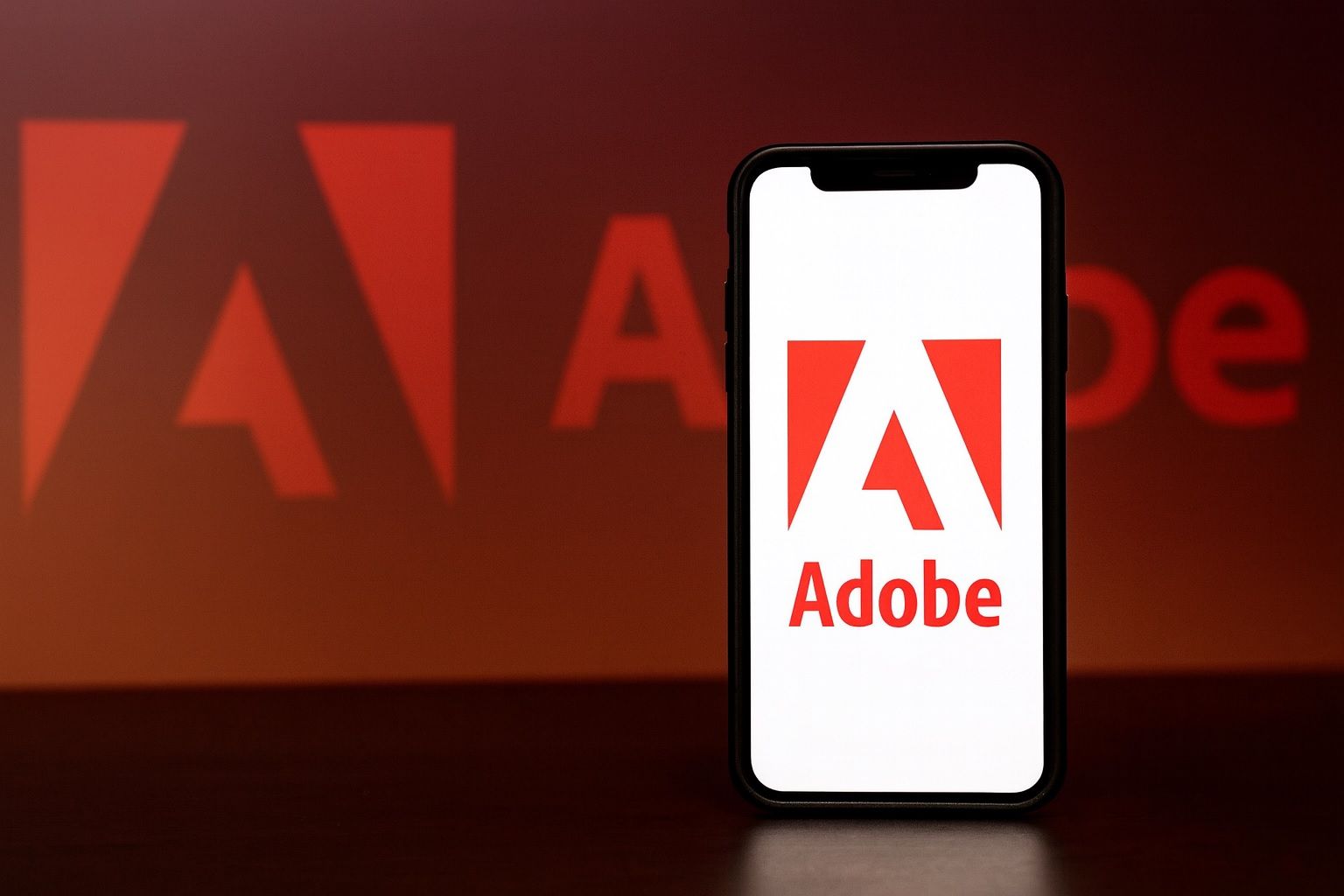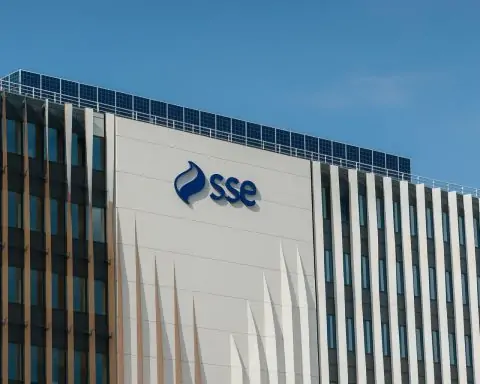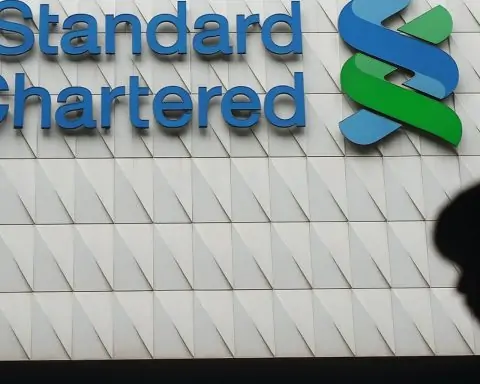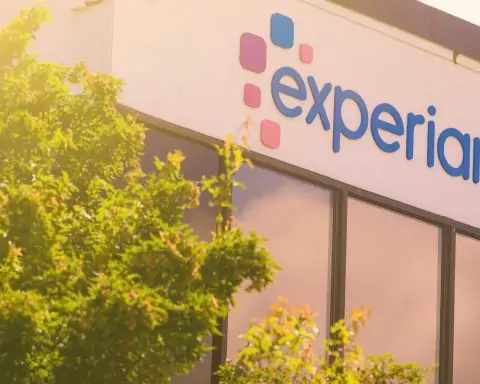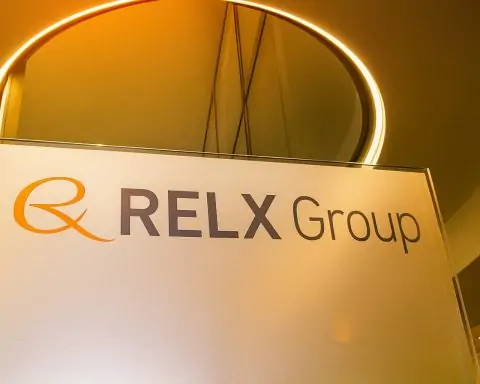- Price/Trend: Adobe shares closed around $340.31 on Oct 31 [1]. This is near the 52-week low (~$327–329) [2] [3], and reflects a ~24% drop year-to-date (Nasdaq +~25% YTD) [4] [5]. After trading near $330 in mid-Oct, the stock briefly rebounded on Oct. 21 (~$356) before tumbling again on Oct. 29 [6] [7]. On Friday (Oct. 31) it traded just above prior support, with technicals still weak (below 50-day & 200-day moving averages [8]).
- Q3 Results & Guidance: In early Sept, Adobe beat Q3 (FY2025) expectations: Revenue $5.99B (+10% YoY) vs. est. $5.91B [9], EPS $5.31 vs. est ~$5.18. Management raised full-year 2025 guidance – revenue now $23.65–23.70B (up from $23.50–23.60B) and EPS to $20.80–20.85 (from $20.50–20.70) [10]. CFO Dan Durn noted “new users and subscribers… are the predominant drivers of growth” [11]. These strong fundamentals contrast with the stock’s underperformance, underscoring investor focus on other factors.
- AI/Product News (MAX 2025): At its Adobe MAX conference (Oct 28–29), Adobe rolled out major AI upgrades: Firefly (image AI) now supports video, audio and advanced editing; a new AI “co-creator” assistant in Express; and an Adobe AI Foundry service to build enterprise-branded AI models. Adobe also announced an expanded Google Cloud partnership. Customers will have direct access to Google’s AI models (Gemini, Veo, Imagen) inside apps like Firefly, Photoshop, Express and Premiere [12]. As CEO Narayen put it, this deal “brings together Adobe’s creative DNA and Google’s AI models” to empower new content creation [13]. These moves highlight Adobe’s AI push, but investors reacted cautiously, seeing execution and monetization challenges (see below).
- Analyst Sentiment & Price Targets: Wall Street remains divided. According to TS2.tech, the median 12-month price target is ~$433 [14] (range ~$280–$590), implying ~25% upside. Most analysts rate ADBE a Buy/Overweight [15]. For example, DA Davidson recently reiterated a Buy (PT $500), while Morgan Stanley cut its rating to Equal-weight (PT $450) and RBC Capital cut to $430 [16]. However, some caution that Adobe’s AI monetization has “lagged initial investor…expectations,” per Morgan’s Keith Weiss [17]. RBC similarly warned it “will take more time to prove out” the AI initiatives [18]. On valuation, Adobe trades at roughly 16× forward earnings (vs. ~21× trailing) [19] – low by “hot tech” standards – and generates strong cash flow. At these levels some strategists call ADBE “compelling value” if the AI catalysts materialize [20].
- Competition & Context: Adobe’s stock has lagged the broader tech rally. Investors see Adobe in an “AI crossroads” [21] – a market shifting to AI has largely rewarded pure-play leaders (e.g. Nvidia, Microsoft, up strongly), while Adobe’s creative apps (mature subscription business) face intense competition. Smaller rivals like Figma (now public) and Canva (private, ~$42B valuation) are adding generative AI features, threatening Adobe’s market share [22] [23]. Big tech (Google, Meta) are also pushing into creative tools. Meanwhile, consumer demand seems cautious: Adobe Analytics projects U.S. holiday e‑commerce sales growth of only ~5.3% (vs. 8.7% last year) [24], suggesting a mixed macro backdrop.
- Upcoming Catalysts: Key near-term items include user uptake of MAX announcements (e.g. Firefly video usage during free promo period through Dec 1 [25]), and tracking macro trends (holiday spending, tech sector rotation). Adobe’s next earnings (Q4 FY2025) is expected around Dec 10. In the very short term, any news over weekend (e.g. AI demos or competitor moves) could sway Monday’s pre-market.
Stock Performance & Recent Financials
Adobe’s share price has drifted downward for much of 2025, underperforming the tech sector. After peaking near $555 in 2024, ADBE sank to lows around $327–329 by mid-October [26] [27]. The Nasdaq Composite is up ~25% YTD, whereas Adobe is off roughly 23–25% [28] [29]. A partial rebound in late Oct (to ~$356 on Oct 21) coincided with the launch of Adobe AI Foundry [30], but the stock quickly reversed. On Oct 29 (post-MAX news) it fell ~6% intraday [31]. Heading into Monday, ADBE is trading just above its recent lows (last close ~$340 [32]) and remains technically weak (below its 50-day ~$351 and 200-day ~$369 SMAs [33]).
In fundamentals, Adobe’s latest quarterly results (Q3 FY2025, ended Aug 29) were solid: Revenue $5.99B (+10–11% YoY) and non-GAAP EPS $5.31, each above consensus [34]. Growth was broad-based, with Creative Cloud (Digital Media) up ~12% YoY. Following the beat, management raised FY2025 guidance: revenue is now expected at $23.65–23.70B (from $23.50–23.60B prior) and full-year EPS to $20.80–20.85 [35]. CFO Dan Durn told Reuters, “new users and subscribers… are the predominant drivers of growth” for Adobe [36]. In short, the core business trends and guidance remain healthy, suggesting fundamentals alone should support the stock – leaving valuation and AI execution as the critical factors driving recent weakness.
AI/Innovation: MAX Announcements & Partnerships
Adobe is aggressively pushing generative AI across its product suite. At the Adobe MAX 2025 conference (Oct 28–29), the company unveiled its Firefly 2 initiatives: a unified AI studio for image, video, audio and text, with new models (“Image Model 5”), one-click Generate Soundtrack/Speech, smarter AI assistants in Photoshop/Express, and a new multi-track Firefly video editor [37] [38]. These tools aim to make Firefly a one-stop creative AI engine. To accelerate adoption, Adobe is offering unlimited Firefly generation credits (images & video) to many Creative Cloud plans through Dec 1 [39], hoping to lock in users. However, translating this product velocity into clear near-term revenue remains an open question. As one TS2 analysis put it, “analysts generally liked the roadmap, but some cautioned that the AI threat narrative won’t vanish overnight” [40].
A key announcement was an expanded partnership with Google Cloud. Adobe’s press release confirmed that Google’s latest AI models (Gemini, Veo, Imagen, etc.) will be integrated directly into Adobe’s apps (Firefly, Photoshop, Premiere, etc.) [41]. Enterprises can customize these Google models on Google’s Vertex AI through Adobe Firefly Foundry, building brand-specific AIs trained on proprietary data [42]. As CEO Narayen said, this deal “brings together Adobe’s creative DNA and Google’s AI models to empower creators and brands to push the boundaries of what’s possible” [43]. Adobe also highlighted partnerships with YouTube (bringing Premiere to Shorts) and in-document AI (Acrobat Studio). These moves reinforce Adobe’s position in the creative ecosystem and could drive future upsell, but investors note the company is effectively licensing others’ models (Adobe’s value-add is integration and data) – again testing confidence that Adobe can monetize its AI investments.
Analyst Outlook & Price Targets
Wall Street’s Adobe analysts have mixed views. According to MarketBeat/TS2 data, the 12-month consensus price target is roughly $433 [44] [45] (ranging $280–$590), implying mid-20% upside from current levels. Most analysts remain positive: of ~30 ratings in the past year, only a few are Sell/Hold, with the majority Buys (and even a Strong Buy) [46]. For example, DA Davidson has an “outperform” stance (PT $500 [47]), while Piper Jaffray is also bullish. On the other hand, Morgan Stanley downgraded to “Equal-weight” (PT $450) and warned that direct AI monetization “has lagged initial investor (and our) expectations” [48]. Similarly, RBC Capital Markets cut its price target (now $430) and noted it “will take more time to prove out” the AI initiatives [49]. Overall, analysts’ models generally assume steady high-single-digit growth through FY2026, with non-GAAP operating margins above 45% (reflecting AI effects) [50].
Importantly, at around 16× forward earnings [51], Adobe’s valuation is modest compared to many “AI era” tech stocks. Its subscription model generates strong free cash (e.g. ~$2.2B from ops in Q3 [52]), enabling share buybacks ($2.2B in Q3) and dividends. Some market-watchers therefore argue that Adobe’s pullback looks like an opportunity if the company can execute: as TS2 observes, Adobe is “compelling value” if its AI catalysts pay off [53]. Still, if future growth disappoints or multiples re-compress, even the current stock could slide further.
Market Context & Risks
Adobe’s challenges cannot be viewed in isolation. This year’s market leadership has been dominated by chip and cloud AI plays (Nvidia hit a $5T market cap [54], Microsoft surged on cloud/AI strength) – areas where Adobe doesn’t compete directly. By contrast, Adobe’s core markets (creativity and marketing software) are more mature, so short-term growth hinges on convincing enterprises/creators to adopt these new tools. Analysts say Adobe is now at an “AI crossroads”: success means Adobe will drive broad enterprise AI adoption (from creative to marketing), but failure or delays could see it ceded to competitors [55]. Competitive risks include Figma (now a public rival after its July IPO) and Canva (recently valued ~$42B) — both rapidly adding generative AI features that could lure users away [56] [57]. Tech giants are also pressuring Adobe’s turf: Google (Gemini AI), Meta (upscaling design tools) and others are bundling creativity into their platforms.
Macro and consumer trends also matter. Adobe’s Analytics unit reports U.S. holiday online sales growth slowing to ~5.3% this year (vs. 8.7% in 2024) [58]. This deceleration hints at more conservative ad/marketing budgets and a tougher backdrop for digital-media firms. Rising interest rates and any broader market volatility could make growth stocks like Adobe vulnerable. However, Adobe’s balance sheet and recurring revenue model offer some buffer; it has no net debt and plenty of cash. In the near term, watch for earnings on Dec. 10 (after market), but also keep an eye on product adoption indicators (Firefly usage, Foundry customers) and wider tech sentiment.
Bottom Line: As Monday’s open approaches, Adobe stock is trading cautiously. Recent AI-driven product launches and partnerships (e.g. Google Cloud) reaffirm the company’s long-term vision, but they haven’t yet convinced investors. Key factors to monitor include next-day news flow, any analyst updates, and how the broader tech rally behaves. Many strategists still forecast 20–30% upside over a year if Adobe can convert its AI projects into growth. But for now, the market remains fixated on near-term execution risk. (Sources: Adobe/Reuters earnings releases [59] [60]; TechStock² analysis [61] [62] [63]; Bloomberg interview [64]; Adobe press releases [65] [66]; MarketBeat consensus [67] [68].)
References
1. www.marketscreener.com, 2. www.marketscreener.com, 3. ts2.tech, 4. www.marketscreener.com, 5. ts2.tech, 6. ts2.tech, 7. ts2.tech, 8. ts2.tech, 9. www.reuters.com, 10. www.reuters.com, 11. www.reuters.com, 12. news.adobe.com, 13. news.adobe.com, 14. ts2.tech, 15. ts2.tech, 16. ts2.tech, 17. ts2.tech, 18. ts2.tech, 19. ts2.tech, 20. ts2.tech, 21. ts2.tech, 22. ts2.tech, 23. ts2.tech, 24. ts2.tech, 25. ts2.tech, 26. ts2.tech, 27. www.marketscreener.com, 28. ts2.tech, 29. www.marketscreener.com, 30. ts2.tech, 31. ts2.tech, 32. www.marketscreener.com, 33. ts2.tech, 34. www.reuters.com, 35. www.reuters.com, 36. www.reuters.com, 37. ts2.tech, 38. ts2.tech, 39. ts2.tech, 40. ts2.tech, 41. news.adobe.com, 42. news.adobe.com, 43. news.adobe.com, 44. ts2.tech, 45. www.marketbeat.com, 46. www.marketbeat.com, 47. ts2.tech, 48. ts2.tech, 49. ts2.tech, 50. ts2.tech, 51. ts2.tech, 52. ts2.tech, 53. ts2.tech, 54. www.reuters.com, 55. ts2.tech, 56. ts2.tech, 57. ts2.tech, 58. ts2.tech, 59. www.reuters.com, 60. www.reuters.com, 61. ts2.tech, 62. ts2.tech, 63. ts2.tech, 64. www.bloomberg.com, 65. news.adobe.com, 66. news.adobe.com, 67. ts2.tech, 68. www.marketbeat.com
